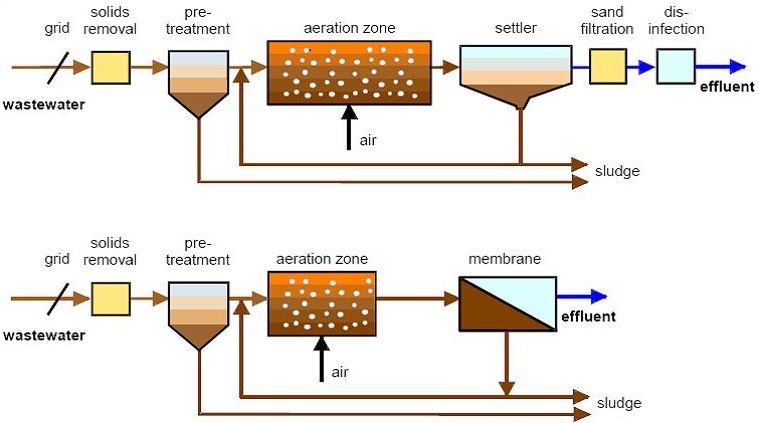Enviraj Consulting
Membrane Bioreactor (MBR)
| Membrane Bioreactor (MBR) | |
|---|---|
| Overview | The Membrane Bioreactor is based on the conventional wastewater process like ASP, but the separation of micro-organisms is performed by filtration with membranes. It is now widely used for municipal and industrial wastewater treatment. |
 |
|
| How Does it Works |
During MBR wastewater treatment, solid–liquid separation is achieved by Microfiltration (MF) or Ultrafiltration (UF) membranes. A membrane is simply a two-dimensional material used to separate components of fluids usually on the basis of their relative size or electrical charge. The capability of a membrane to allow transport of only specific compounds is called semi-permeability (sometimes also permselective). This is a physical process, where separated components remain chemically unchanged. Components that pass through membrane pores are called permeate, while rejected ones form concentrate or retentate. |
| Pollutants Removed | BOD, COD, TKN, TP , TSS, Fecal Coliform |
| Area of Application | Industrial & Municipal |
| Environmental Footprint | High |
| Area Footprint | Morderate |
| Treatment cost per Cubic Meter | Unknown |
| Capital Cost | Unknown |
| O&M Cost | Unknown |
| Data Sources: | https://www.sswm.info |
